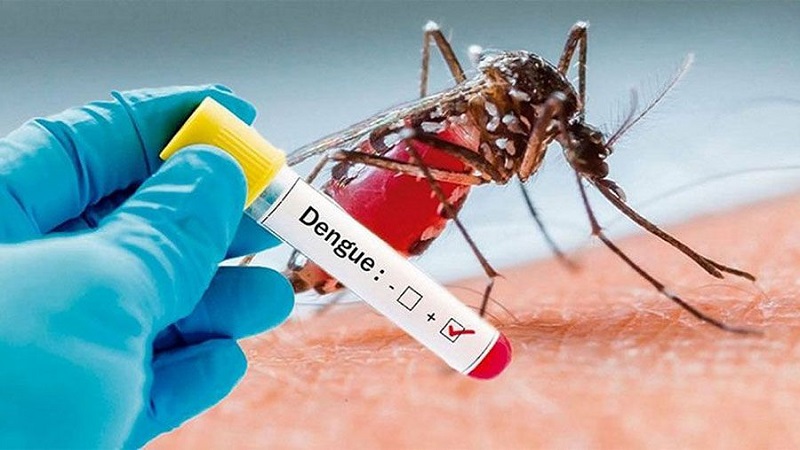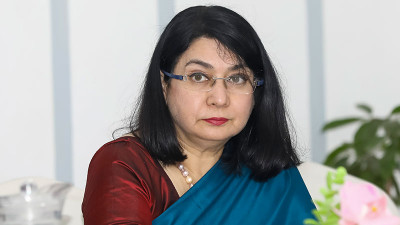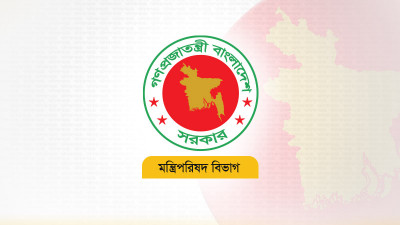 Photo: Collected
Photo: Collected Dengue cases continue to rise across the country, with a mortality rate of less than 1 percent among
those infected. However, both the number of identified cases and the death rate
are on the rise. One-third of this year’s total dengue cases were identified in
September alone. The highest number of cases has been reported in Cox’s Bazar,
a popular tourist destination. Public health experts and epidemiologists fear
that recent floods and excessive rainfall may accelerate the spread of the
disease in the coming month.
Experts have noted that this year’s dengue outbreak
differs from last year’s, although the mortality rate remains nearly the same.
The dengue season typically runs from May to October, but the disease has now
been observed year-round for the past few years. Amidst this ongoing situation,
the healthcare sector has not given dengue the necessary attention. They have
continued with routine work, neglecting the issue until a public health
emergency arises. This lack of timely intervention has hindered prevention
efforts. At least 12 districts in the country have experienced flooding
recently, and the water has not yet fully receded. Coupled with heavy rainfall,
the breeding grounds for Aedes mosquitoes have increased, making a rapid spread
of dengue inevitable.
According to data from the Directorate General of
Health Services (DGHS), a total of 21,079 dengue cases have been identified
nationwide as of yesterday (Wednesday, September 18). Among these, 119 people
have died, resulting in a fatality rate of 0.55 percent. In Dhaka, 9,467 cases
have been reported, with 82 deaths. Excluding cases in Dhaka city, 2,061 cases
have been reported in the Dhaka Division, with two deaths. Mymensingh Division
has reported 427 cases with one death. Chattogram Division has seen 5,125 cases
with 18 deaths. In Khulna Division, 1,535 cases have been reported with five
deaths. Rajshahi has reported 277 cases, while Rangpur has reported 137 cases.
Barisal Division has reported 2,039 cases with 11 deaths, while Sylhet Division
has seen only 11 cases throughout the year. Cox’s Bazar has reported the
highest number of cases as a district. This popular tourist district reported
2,644 cases, with five deaths.
Health officials in Cox’s Bazar stated that the rise
in dengue cases began in July. The highest number of cases was identified in
July and August, with the number of cases nearing 2,000 by September 1. The
infection rate in Cox’s Bazar is five to six times higher than in June. Local
authorities are working to reduce the number of cases, but the role of local
government is crucial in this effort.
Sources from Cox’s Bazar Sadar Hospital reported
that heavy rainfall, flooding, and water-logging have contributed to mosquito
breeding. The hospital only has data on patients admitted, but there are likely
many unreported cases outside the hospital’s records.
Chattogram Divisional Health Director Dr. Aung Swi
Prue Marma told Bonik Barta, “Dengue has increased in Cox’s Bazar recently, a
trend seen both last month and this month. We are providing treatment, but the
figures we have are hospital-based. We are doing our utmost to ensure no
shortage of medicine or treatment. Post-flood conditions have further fueled
the dengue spread. We’ve already assigned doctors to areas facing shortages.
There are over 100 upazilas in the division, and we are coordinating with all
of them. Cox’s Bazar is currently receiving the highest priority.”
A large number of dengue patients are unaccounted
for in the government’s tally, especially in the Rohingya camps in Cox’s Bazar.
Various non-governmental organizations (NGOs) working on health issues
alongside the government report that the camps are particularly susceptible to
dengue due to environmental factors. This year, at least 5,000 dengue patients
have been identified in the camps.
According to DGHS data, dengue patients are being
treated at 18 government and 59 private hospitals in Dhaka. Information on
hospital admissions and deaths is reported to the DGHS and included in national
statistics on dengue. The government is also receiving data on dengue patients
from district and upazila-level hospitals. However, there are many unreported
cases across the country in private clinics, smaller hospitals, and homes,
which are not included in the government’s records.
DGHS data shows that 1,055 dengue patients were
identified in January, with 14 deaths. In February, 339 cases were reported
with three deaths, followed by 321 cases in March with five deaths. April saw
504 cases and two deaths, while May had 644 cases and 12 deaths. In June, 798
cases were reported with eight deaths, while July saw a sharp increase to 2,669
cases and 12 deaths. In August, the number of cases surged to 6,521, with 27
deaths. So far this month (as of yesterday), 8,238 dengue cases have been
identified, with 36 deaths.
DGHS Director (Disease Control) Dr. Sheikh Daud
Adnan told Bonik Barta, “We are operating at the highest level of caution due
to the rise in dengue cases. No deficiencies have been allowed in treatment
management. We are regularly coordinating with all districts and upazilas
nationwide to ensure no shortage of medical care. Both central and local
efforts are being emphasized for dengue prevention.”






